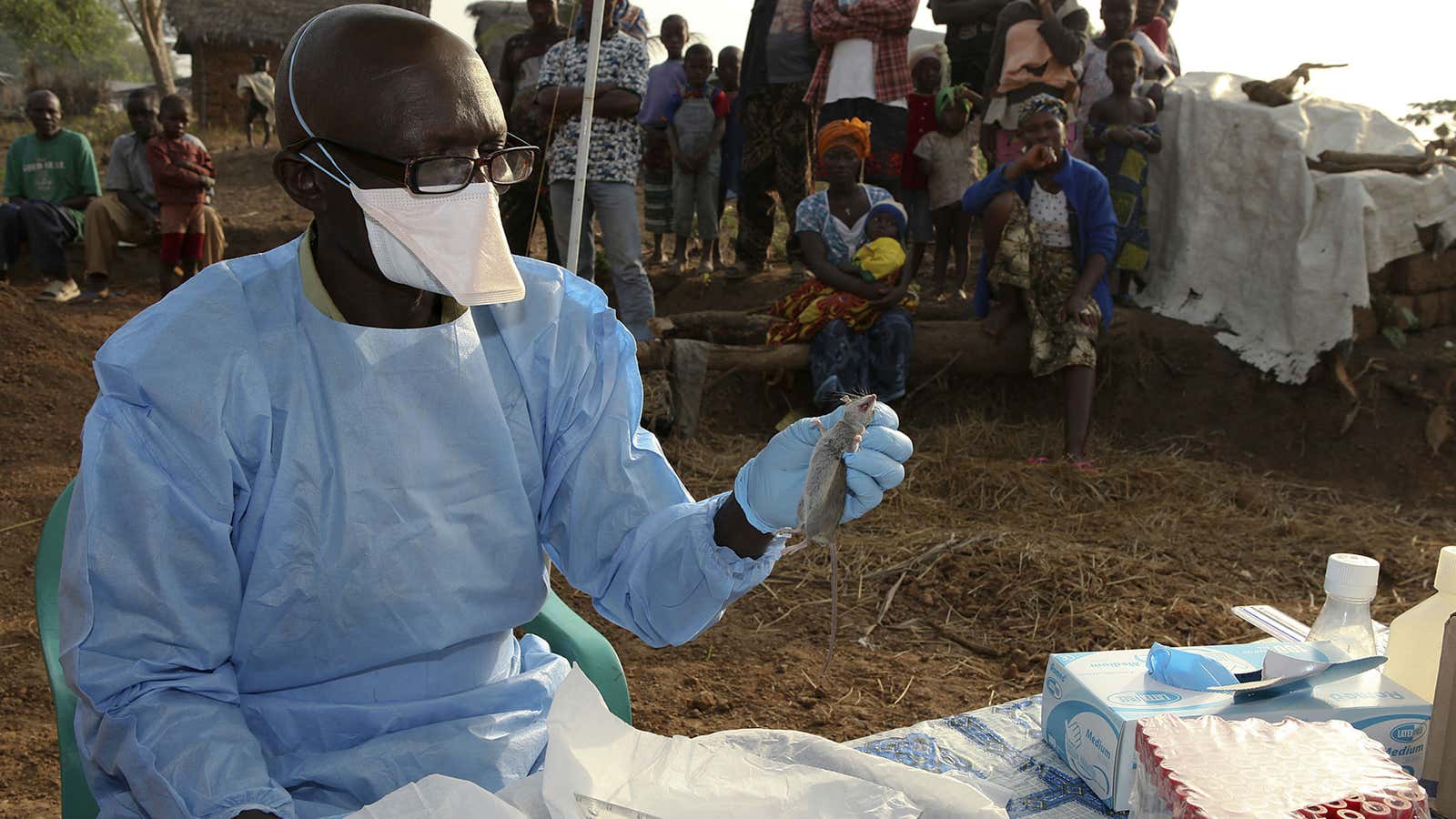Nigerian health authorities are calling the current outbreak of Lassa fever “unprecedented.”
Lassa fever is a hemorrhagic virus. It starts out looking like the flu a couple of weeks after someone is exposed to the virus, and in about 20% of cases can damage blood vessels and organs to the point where they bleed internally, or externally through the eyes, nose, and gums. It’s endemic to parts of western Africa, and every year there are anywhere between (pdf) 100,000 to 300,000 cases of reported in countries including Nigeria, Sierra Leone, Liberia, and Guinea.
So far, the Nigerian Center for Disease Control has reported over 353 lab-confirmed cases (out of over 1,100 suspected instances) of the virus within 18 states clustered near the coast and center of the country. Last year, there were 143 confirmed cases, up from 101 the year before. Yet it’s not just the number of cases that are making this year so bad—it’s the lethality of the strain.
Normally, Lassa is only fatal in an average of 1% of cases, and 15% for those people who have to go to the hospital—a far cry from other hemorrhagic viruses like Ebola, which kills about 70% of those infected. But according to a report (pdf) from Mar. 4, this time the disease is killing 23.8% of those infected. There have been 110 deaths since the beginning of the year.
Health officials are calling for all hands on deck to try to stop the spread of the virus. It’s spread through fluids from a person who already has the virus, or the excrement of the multimammate rat. These rats are all over the country and like generic rodents you’d find anywhere, except for the 18 mammary glands on females (hence the name). The Nigerian Emergency Operations Center is working at maximum capacity to establish more laboratory facilities for diagnosing cases and issuing reminder guidelines for healthcare workers across the country for treating the fever.
It’s not totally clear why this outbreak is so bad. It could be that rats are finding their ways into more homes in search of food, or that they’re intentionally brought there as a meal (rats are a high-protein source of food). Additionally, the tools for finding the virus have already improved. “When you don’t have the ability to detect the disease, you’re not going to find it,” Lina Moses, an epidemiologist at Tulane University told the Atlantic. Better labs can mean more cases, and perhaps an improved healthcare system, Moses said, but this factor probably doesn’t account for the surge of cases within the country this year.
At the moment, there’s no vaccine or cure for the virus. There is antiviral medication that works, if someone takes it within a week of contracting the virus. That early on, though, it’s hard to tell if you’re sick. This week, the Coalition for Epidemic Preparedness Innovations, a global health group with headquarters in Washington DC and Europe, started working with an Austrian biotech company called Themis Bioscience to develop a vaccine for Lassa fever and Middle East respiratory syndrome (MERS).
